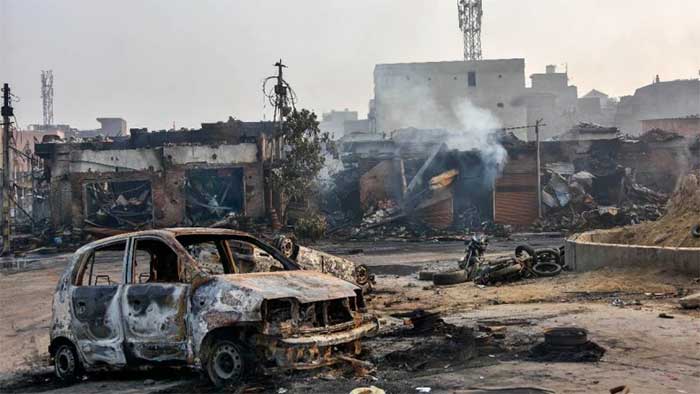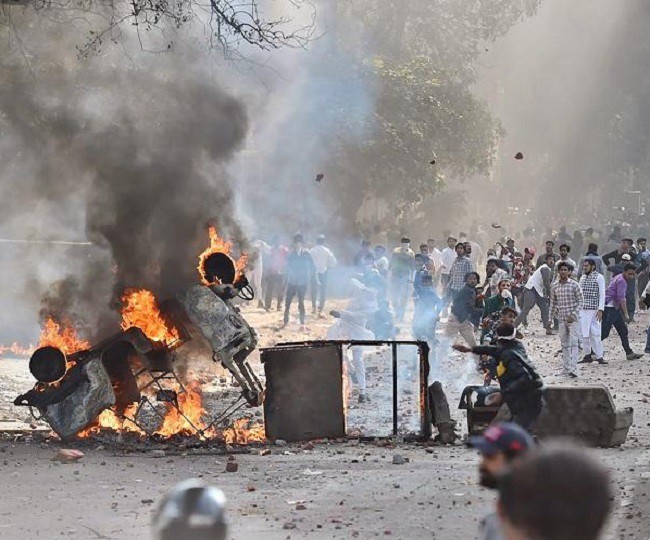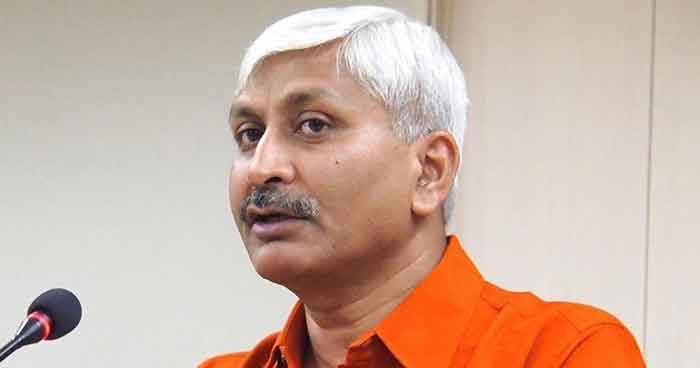
Dil ki basti purani Dilli hai
Jo bhi guzra hai uss ne loota hai
(My heart is [like] the Delhi of yore
Whoever has passed through it, has looted it)
The renowned poet Bashir Badr compared the afflictions of his heart with the city of Delhi in this famous couplet. Like the city, he claims, his heart was looted by everyone who passed through it. This is perhaps the most enduring image of Delhi. A city looted, plundered and destroyed; only to rise again like the proverbial phoenix from its ashes. Its landscape studded with hundreds of remnants of its history, rich in memories of an apparently violent past has served as the focal point of many political mobilizations and vitriolic campaigns over the years. The results are for everyone to see.
Even before 2020 was declared the worst year by most inhabitants of a fraying world, ominous signs were clear in Delhi. The CAA had created a nation divided, forcing people on both sides to delve into history. The history of Delhi had never been more important. While some were convinced that Delhi’s violent past was the result of the fanaticism and greed of a community that forced its way uninvited into this country, others were forced to dig deep into their history to find proof of their very existence. Fear, loss and despair were apparent in dinner table conversations even as family WhatsApp groups were flooded with documents that could possibly save the day. While the family went into a frenzy looking for proof and documents, I was reminded of my grandmother who was primarily responsible for shaping my understanding of the city and its past. Amma was no historian but did have something not many in this city can claim to possess. She was a Delhi wali and had lived in the city all her life. She knew the city like that back of her hand, the most obscure of its structures and the narrowest of its lanes. Even before I knew what history meant my conversations with Amma had acquainted me with so much about the city’s history.
Most of what I learnt from Amma came from our conversations in the summer vacations I spent at her house. As the blistering sun gave way to a cool summer breeze in the evenings, Amma and I set up her old charpoy in the courtyard under the mulberry tree. Amma sprayed water on the floor while I picked out a bright sheet to go over the charpoy. We sat and talked for hours and Amma acquainted me with a Delhi that would appear alien to many today. One afternoon as an earthquake jolted the city; Amma held me close, closed her eyes and recited a prayer. I asked Amma later ‘What if Delhi was destroyed in the earthquake Amma?’, ‘What will you do then? Where would you live?’ Amma smiled at me and said “beti ye bais khwajaon ki chaukath hai, mohabbat ka sheher hai, isko kabhi kuch nahi hoga” (my child this is the abode of 22 saints, the city of love, no harm can come to it). Too young to understand what she meant, I started to believe that there were 22 khwajas (saints) who guarded the city from all calamities. Who these khwajas were didn’t matter to me as long they discharged their duties well- which Amma assured me they did- I felt safe in the city. This feeling refused to leave me even in the most difficult of times.
I often wonder what made Amma call it mohabbat ka sheher? Had she not heard of the city’s violent past? Had she not lived through some of its worst moments? Of course she had. As I thought about the stories Amma narrated to me about Dehli and its people I realized that even in its darkest moments she had found love. Amma’s Dehli was vastly different from mine. In her Dehli, Amma’s best friend was her much older her Sikh neighbor whom she called Behenji. Amma and Behenji got together every now and then to make the halwa that Behenji distributed to the poor on the streets. When news of the partition arrived Behenji had been visiting her family in Lahore. She sent a letter to Amma with a family friend who had managed to leave early. The letter asked Amma to stay strong. ‘Hindustan is your home Chhoti’, she had written, ‘stay there and don’t let anyone tell you otherwise. I will arrive soon’. Amma told me that the letter was an enormous source for strength for her and her husband who chose to stay in Delhi while their family migrated to Pakistan. Amma’s Dehli was different. Alarmed by the growing tensions in the city, Amma and her family had taken shelter at the Dargah Sabri in Darya Ganj, where she saw found at least ten Hindu families being looked after in those difficult times. The Khwajas didn’t abandon Dehli either. Amma said that she saw a tall bearded man miraculously appear on the streets at night. He would keep vigil all night and disappear at the break of dawn. ‘Was it one of the Khwajas Amma?’ I would ask at the end of this story. Amma would smile and say ‘of course’.
Amma’s Dehli was different and her story of Dehli was not of violence or plunder but of love, camaraderie and a sisterhood that is difficult to come by now. This was a city of the Khwajas, where sacred spaces were shared and people gathered in hundreds to hear the Qawwals sing of Mira’s devotion to Moinuddin Chishti. Songs where Jogis and Sufiis appeared together to praise the one true God. A city of Sufi saints and never ending langars at Dargahs and Gurudwaras; of the celebrations of Urs and of the poetry of love and longing.
Amma passed away in 1995. I was devastated. She had left so many of her stories incomplete. When I moved to Delhi, something miraculous happened. Amma started appearing in my dreams. As I delved deeper into the history of the city, her appearances became more frequent. She would meet me covered in her pristine white dupatta at monuments, in bazaars, at sweetshops and at mausoleums. Her stories continued in my dreams and I refused to visit her grave, for me Amma was still around. Amma had instilled in me a strong sense of belonging to this city, it was an important part of who I was. Even the most venomous of diatribes could not shake my faith in this sense of belonging.
As hate took over Amma’s city of love and blood flowed through its streets once again, I tried to find her in my dreams, but she wouldn’t come. Then one night she came. She looked different. Her smile had disappeared and her pristine white dupatta was stained with black marks. As I looked closely Amma was standing beside a burnt down Mazaar. ‘I was trying to wipe the walls clean’, she said pointing to the Mazaar, ‘but they are covered in hate’ she said, tears rolling down her eyes. I had nothing to say to her and she walked away. The next day I went to visit her grave, she rests under a sweet smelling champa tree. She is here now, not in Dehli. I lost not only Amma but also my Dehli. Do I still belong here?
Rohma Javed Rashid is an assistant professor at the Department of History and Culture, Jamia Millia Islamia
SIGN UP FOR COUNTERCURRENTS DAILY NEWSLETTER















































